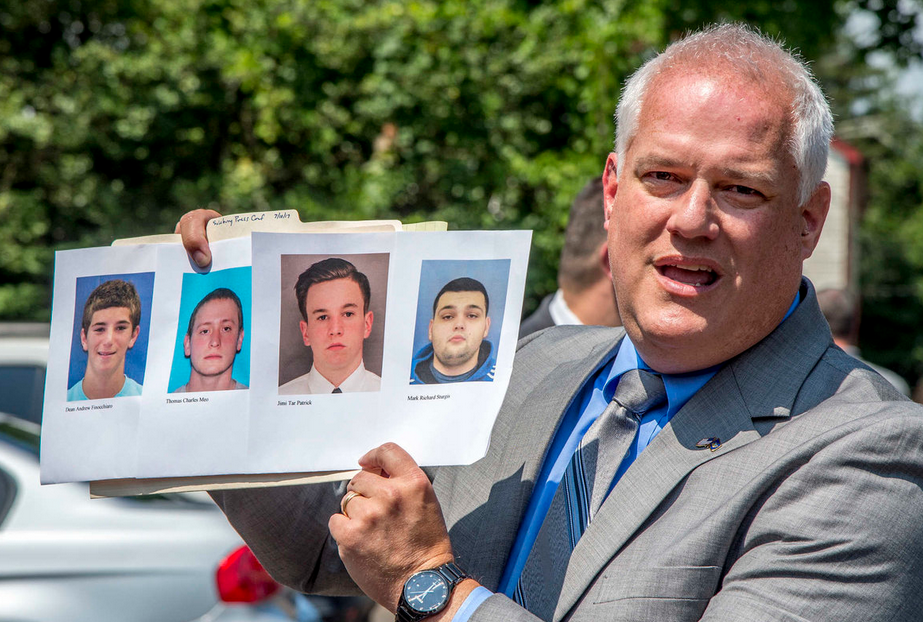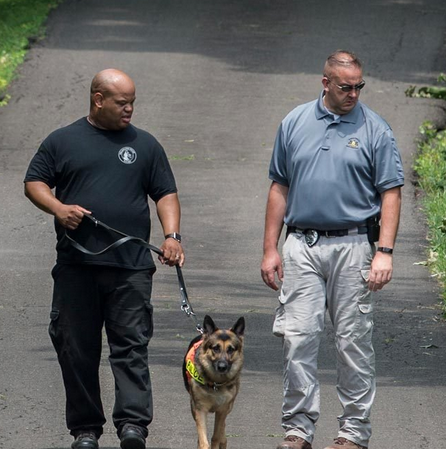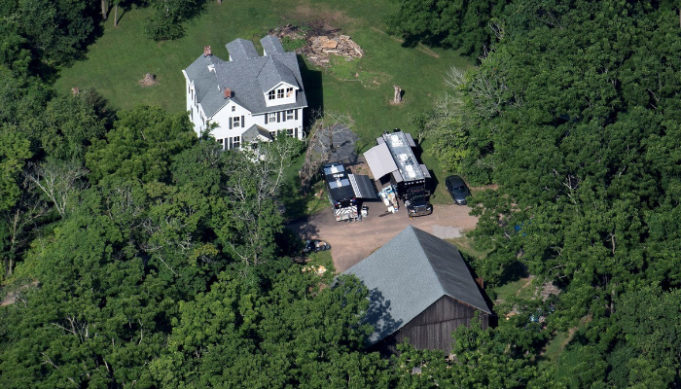The bodies of 4 missing men have been located after the biggest manhunt in recent history, thanks to cadaver dogs.
Since the disappearance of 4 young men in Pennsylvania last week, search efforts have been underway to locate them and find out what happened to them.
The young men, aged 19-22 years old, went missing on or around July 7th. Huge search efforts ensued.
Late Wednesday night at midnight, it was announced that the bodies had been located on a Solebury Township tract, buried in a 12-foot common grave.
On Thursday, 20-year old Cosmo DiNardo confessed to the killings, after being held in custody for stealing the car of one of the victims. DiNardo confessed to “participation or commission” of the killings, and told authorities where they could find the bodies. He gave no motive for the murders.
In return for his confession, DiNardo will be spared the death penalty, according to his lawyer.
The 4 young men were Dean A. Finocchiaro (19), Thomas C. Meo (21), Jimi Tar Patrick (19) and Mark R. Sturgis (22) of Bucks and Montgomery Counties.
The bodies were only located after cadaver dogs were brought to DiNardo’s property. There, they detected the smell of the bodies after scouring the overgrown 90-acre property.
District Attorney Matthew D. Weintraub says he doesn’t understand the science behind it, but that the dogs detected the scent of the bodies even though they were located 12 and a half feet below ground.

Photo: CLEM MURRAY / Inquirer Daily News
How the Dogs Detected the Bodies
It is a true science, according to Mark Hopkins, chief of Greater Philadelphia Search and Rescue. Hopkins also points out that it’s a bit of an art, due to its interpretive nature.
Hopkins’ team was not involved in this particular search. But he has three trained cadaver dogs who have responded to more than 100 searches for human remains for the past 40 years.
Hopkins speculates that several factors contributed to the quick find: the abundance of bodies, the hot summer temperatures, loose soil, and likely some trace evidence on the surface above the grave site.
Dogs have smelling capabilities which are hundreds of thousands of times more sensitive than that of humans.
Human Remains vs. Others
So what if a dog mistakes the remains of a squirrel or bird for a human?
That doesn’t happen. Their noses are so sensitive that they can easily distinguish the differences in acidic breakdowns which occur in different species.

Photo: CLEM MURRAY / Inquirer Daily News
Canines can detect bodies in extremely hidden places, under extraordinary circumstances. They have even been known to recover remains that are over 100 years old. For example, dogs recently located the body of one person who was part of the 57 Irish railroad workers buried in Duffy’s Cut. These men perished in the 1830s.
Tough Training Tactics
Along with the dog’s biological advantage, the handler of the dog plays an equally crucial role in the procedure.
The handler needs to be in good physical shape, keep an open mind, be able to follow orders, and get trained themselves twice a week.
RELATED: CADAVER DOGS CAN NOW MORE ACCURATELY IDENTIFY HUMAN REMAINS
A handler also needs to be able to trust the dog, and to make sure the dog is signaling correctly. Dogs signal a find by sitting, jumping on the handler, or barking.
Training is not easy. Handlers purchase scents which stimulate the smell of decomposing human remains. In addition, they collect soil samples from crime scenes to use during training (after the crime scene is cleared).
The soil samples are buried, elevated, put in water, and put in concrete. Some dogs search exclusively on land, while others can search land and water. Just like human, Hopkins says, some dogs don’t like boats.
Thanks to their incredible sniffing abilities paired with this focused and dedicated training, cadaver dogs like the ones in this case are able to help authorities detect bodies when many other human techniques would fail.
While nobody could have prevented these murders, the dogs on the case helped ensure that this case did not go cold.













